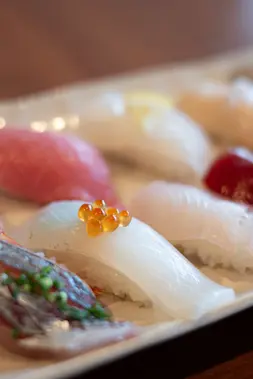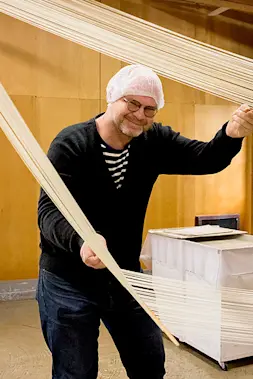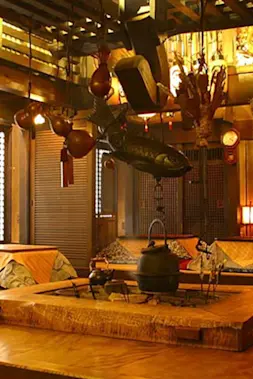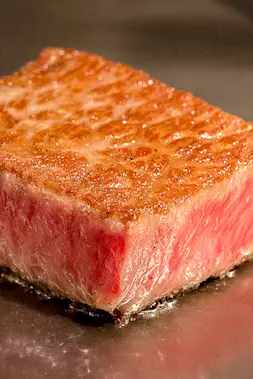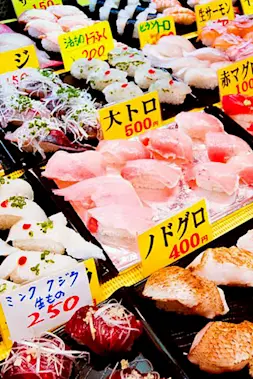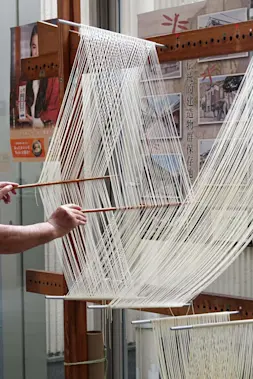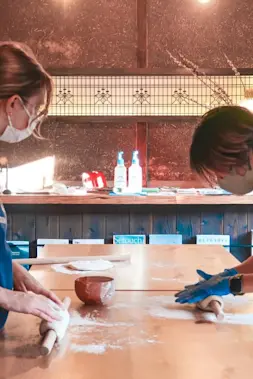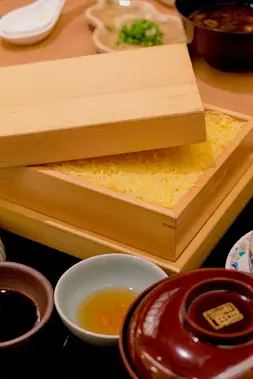Food & Drink
Kakushi Sushi - Seditious, Nutritious, and Delicious

-
- DESTINATION NAME
- Okayama
-
- RELATED TAGS
-
- LAST UPDATED
- 16 October, 2019
When ordering kakushi sushi for the first time, if you didn’t know what to expect you’d probably be pretty surprised— or maybe a bit deflated. After all, when you open the lid to this Okayama delicacy, all that will greet your eyes is finely chopped egg spread over plain white rice.
Look boring enough? Great! Because that’s exactly what you’re supposed to think. And were this the Edo Period, I’d want nothing more than for you to keep on thinking that while I sit over here with my “very boring sushi” all to myself.
Now, you may be wondering why anyone would go out of their way to make a delicacy engineered to look so underwhelming? The answer, deliciously enough, is rebellion.
While some of the details are still subject to debate, we do know that back in the early Edo Period, Ikeda Narimasa, the sixth daimyo of Bizen Okayama (the area known today as Okayama Prefecture) decreed that, “There shall only be one dish on the dining table”—and by that he meant one topping on a single bowl of rice.
According to some legends, the denizens of Narimasa’s domain would thumb their noses at his unsavory law by sequestering a cornucopia of vegetables, shrimp, and fish beneath the rice of their lunch boxes—and then when no one was looking, feast on their kakushizushi or “hidden sushi.” Yet as other traditions would have it, the Okayama citizens skirted around the decree by piling a medley of toppings onto their rice and claiming it was still “one dish,” thus giving rise to what is known today as “barazushi.” Still others believe both strategies persisted in Okayama at that time, while others say neither ever did.
Whatever the case, Japanese Restaurant Kibizen, located in Hotel Granvia Okayama, offers a more dramatic answer to Lord Narimasa’s erstwhile miserly law. Simply replace the lid, flip the box, and—BAM—it’s party time.
As it turns out, books aren’t the only things which shouldn’t be judged by their covers. The delights waiting within each serving of kakushi sushi form a combination of traditional Okayama specialties and seasonal delicacies sure to delight even the most discerning rebels among us. Mantis shrimp, conger eel, salted salmon roe, sardinella, lotus root, black beans flecked with gold, and more will greet you the instant you flip the lid. Served as a full course, the delicacies served with kakushi sushi will vary from season to season to offer a perfect harmony of tastes.
Another surprise you’ll discover when ordering kakushi sushi is the dipping sauce. While Kibizen does provide soy sauce with kakushi sushi to appease modern palates, back when Narimasa held sway, soy sauce wasn’t widely available. So in accordance with tradition, Kibizen also serves up a dish of the popular dipping sauce of the day, made by boiling down pickled plums in a mixture of sake (traditional rice wine) and dashi (fish broth).
The result is a light and delicate mixture which, between the smooth sake underpinnings and subtle fruit notes imbued by the pickled plums, adds a marvelous brightness to each morsel which ever dipping sauce you choose. No need to fret over the decision though as Kibizen provides both options. In fact, alternately trying the one and then the other will only bring yet a further dimension of culinary adventure to your table.
A dessert of hot Japanese tea and fresh local fruit brings the dish to a masterful close.
If you’re ready to defy the daimyo and indulge in this infamous Okayama specialty, I recommend you order your “hidden sushi” at least 24 hours in advance, as only a limited number are prepared each day.
After all, we wouldn’t want the secret to get out—now would we?
Photographs & Text by Peter Chordas
RELATED DESTINATION
Okayama
The Okayama area has flourished as an area alive with various culture including swords, Bizen ware and other handicrafts. Because of its warm climate, fruits such as peaches and muscat grapes are actively grown there. It is also dotted with places where you can see the islands of the Seto Inland Sea.






























